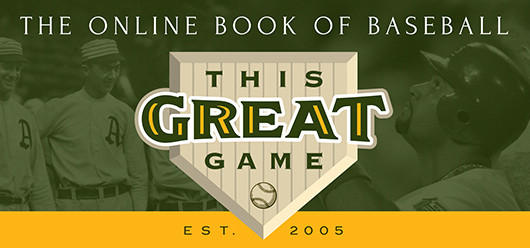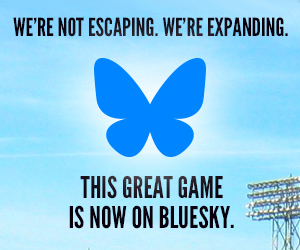THE TEAMS
The Rangers’ Five Most Memorable Games
 November 1, 2023: The Third Rodeo is the Charm
November 1, 2023: The Third Rodeo is the Charm
The Rangers entered the 2023 season as the longest-existing (63 years) of six MLB teams never to win a World Series. Despite recent big-name acquisitions in middle infielders Corey Seager and Marcus Semien, ace pitcher Jacob deGrom and veteran manager Bruce Bochy—lured out of retirement following a successful run at San Francisco—not much was expected out of a Texas team coming off 60-102 (2021) and 68-94 (2022) campaigns. But the Rangers rebounded, grabbed a wild card spot, swept heavy postseason favorites Tampa Bay and Baltimore in the playoffs before taking their third-ever pennant with a seven-game defeat of AL West rival Houston.
Pitted in the World Series against the Arizona Diamondbacks—an even bigger postseason surprise, stunning National League competition despite a modest 84-78 regular season mark—the Rangers won three of the first four games and took a remarkable 10-0 playoff road record into Game Five at Phoenix. There, they were no-hit through the first six innings by Arizona’s Zac Gallen—but the Rangers kept it scoreless thanks to six shutout innings from Nathan Eovaldi.
In the seventh, the Rangers finally broke through against Gallen, with the first three batters reaching on hits—the third of which, a single from DH Mitch Garver, bringing home Corey Seager with the ice-breaking run. After relievers Aroldis Chapman and Josh Sborz kept the Diamondbacks off the scoreboard through eight, the Rangers exploded in the ninth; Jonah Heim sliced a base hit that skimmed under the glove of Arizona center fielder Alek Thomas—scoring two as the ball rolled to the wall—and Semien applied the exclamation point three batters later with a two-run homer. Sborz came back out for the ninth and retired the Diamondbacks in order, completing a 5-0 win and the first world title in franchise history.
October 27, 2011: So Close, And Yet…
The Rangers could smell victory, their first championship. A year after getting squashed in their first World Series appearance against San Francisco, they now had the St. Louis Cardinals down to their last strike in Game Six of the 2011 Fall Classic. But they couldn’t clinch it.
The wild thing was, it happened twice.
After winning three of the first five games, the Rangers came to St. Louis needing two to win one. In Game Six, they led from start to, almost, finish. The Cardinals kept it tight through six innings, but when the Rangers notched three to make it 7-4 chiefly due to back-to-back home runs from Adrian Beltre and Nelson Cruz, they were buzzing with the specter of raising the trophy in triumph. The Cardinals scratched one run back in the eighth (leaving the bases loaded), and in the ninth—with closer Neftali Feliz in to seal the deal—runners were on first and second with two outs when David Freese launched an opposite field drive to deep right. Almost inexplicably, Cruz passively approached the wall and, as a result, couldn’t catch up to the ball; both runners scored on Freese’s triple, and the game was tied for extra innings.
In the 10th, the Rangers countered. With a runner on and one out, Josh Hamilton—who said no to a disabled list stint and played on with a painful groin—hit his postseason first homer to put Texas back in front by two, 9-7. But more trouble ensued for the Rangers bullpen in the Cardinal 10th. The first two St. Louis batters reached; the next two were retired, scoring one. With the tying run in scoring position and first base open, the Rangers decided to walk the dangerous Albert Pujols, even as he represented the winning run. It also meant taking the risk of facing the equally potent Lance Berkman, batting left-handed against right-hander Scott Feldman. The gambit failed; with two strikes, Berkman singled, two runs scored, the game was tied anew and the Rangers, again one pitch away from winning it all, had to start all over again.
The Rangers put up little fight offensively in the 11th, and the Cardinals wasted little time a half-inning later; Freese returned to the plate and greeted reliever Mark Lowe with a leadoff, straight-away deep fly that cleared the wall to end one of baseball’s greatest games—and most certainly, the most devastating moment in Rangers franchise history.
October 12, 2010: Racing Past the Rays
Cliff Lee played barely three months in a Texas uniform. But in the decisive Game Five of the 2010 ALDS at St. Petersburg against the Tampa Bay Rays, he helped achieved something that the Rangers had never done over 50 seasons of existence: Win a postseason series.
After getting the Rangers off on the right foot with seven solid innings of pitching in Game One, he returned to the mound with the best-of-five series tied at 2-2. He got help in the first inning from shortstop Elvis Andrus, who singled to lead off the game and stole second; when Josh Hamilton hit into a ground out on the right side of the infield, Tampa Bay pitcher David Price, covering at first and his back to home plate, lackadaisically assumed that Andrus would stop at third. Andrus didn’t; instead, he charged around the bag and easily scored. The Rays recovered from the gaffe and tied the game at 1-1 in the third, but the Rangers quickly retook the lead an inning later when Nelson Cruz, who doubled when he should have tripled as he stood at the plate admiring what he thought was a home run, attempted to make it up and stole third—then took home when catcher Kelly Shoppach’s throw went wildly past the bag.
The Rangers upped the lead to 3-1 when Price went asleep on the job again, accidentally ignoring an aggressive Vladimir Guerrero (on bad knees, no less) charging two bases on another ground out. Then Texas applied the knockout blow in the ninth when Ian Kinsler hit a two-run shot to make it 5-1. It was far more than Lee needed; he went the distance, retiring 13 of the last 14 batters he faced and striking out 11 overall (he walked none) in securing the victory and allowing Texas, at last, to celebrate a postseason triumph.
May 2, 1991: The Seventh No-Hitter
Nolan Ryan spent the last five years of his pitching career with the Rangers, and they were wonderful times. He struck out 301 batters in 1989 (the same year he became the first pitcher to reach 5,000 for a career), threw his sixth no-hitter in 1990, and showed that he was not to be trifled with in 1993 when he punched out Chicago’s Robin Ventura as the young third baseman, 20 years Ryan’s junior, dared to charge the mound after being hit. But in 1991, the Ryan Express went full speed ahead at the powerful Toronto Blue Jays in Arlington with his last great historic effort.
Ironically, Ryan struggled with his command in pregame warm-ups to the point that the Rangers considered shelving him for the night; they didn’t, and when Ryan finished the first inning—allowing one walk—he came back to the dugout and stated to his teammates that he suddenly felt good enough to win on just one run of support. The Rangers gave him three instead when Ruben Sierra smacked a three-run homer in the third. From there, it was all about Ryan.
In one stretch from the second to the seventh inning, Ryan retired 18 Blue Jays in a row, striking out 12. Joe Carter walked with two out in the seventh to become the Jays’ second—and last—baserunner of the night. After retiring the side in the eighth, the 44-year-old Ryan—still firing fastballs clocked as high as 96 MPH—completed the no-hitter in the ninth, but not without a tough final face-off with future Hall of Famer Roberto Alomar, who worked Ryan for seven pitches before becoming the 16th strikeout victim of the night. The Arlington Stadium crowd of 33,000, on its feet for the whole of the ninth inning, roared as Ryan was lifted onto the shoulders of Rangers teammates and hoisted off the field with his record seventh no-hitter—while becoming the oldest major leaguer ever to throw one.
June 27, 1973: The Legend of David Clyde
Barely over a year after their move from Washington, the Rangers were struggling to get themselves running on all cylinders in Texas, both in the standings and at the gate. The team was lousy, the ballpark (the circular, banal Arlington Stadium) was awful and the hot and humid weather was intolerable. Desperate to bring the fans in, owner Bob Short—never one to question his numerously horrible player signings—drafted 18-year-old David Clyde as the number one pick in the 1973 amateur draft. The selection was fine, but when Short ordered rookie manager Whitey Herzog to immediately install Clyde into the starting rotation, heartburn reigned in the Texas clubhouse. But for one night, Clyde made Short come off as a genius.
The lure of the Texan-bred southpaw, 18-0 with a 0.18 ERA in his just-completed senior year of high school, facing major league hitters was enough for Rangers fans to pack the joint with a crowd of 35,698—nearly 12,000 more the previous record turnout in Arlington. What they got from Clyde was pure, raw pitching talent in action against Minnesota. He walked the first two batters, then struck out the next three. In the second inning, Clyde walked four more batters, caught two of them stealing, but also gave up a two-run homer to Mike Adams. From there, Clyde settled in—pitching five innings, allowing just the two runs on the one hit, walking seven and striking out eight. He left with a 4-2 lead, and the Rangers barely held it, surviving a one-out, bases-loaded jam in the seventh.
Clyde got credit for the win, but despite much fanfare about his future (for which Short paid $125,000), his debut would amount to his finest hour. Over the next three years, Clyde would make 38 more starts with Texas and struggle to a 7-18 record as he was besieged by arm problems; after struggling for two more years laboring exclusively in the minors, Clyde was given a second shot at the majors by the Cleveland Indians with little success. He was out of baseball after 1981 at the age of 26.
Texas Rangers Team History A decade-by-decade history of the Rangers, the ballparks they’ve played in, and the four people who are on the franchise’s Mount Rushmore.
The Rangers’ Five Greatest Hitters A list of the five greatest hitters based on their productivity and efficiency.
The Rangers’ Five Greatest Pitchers A list of the five greatest pitchers based on their productivity and efficiency.








